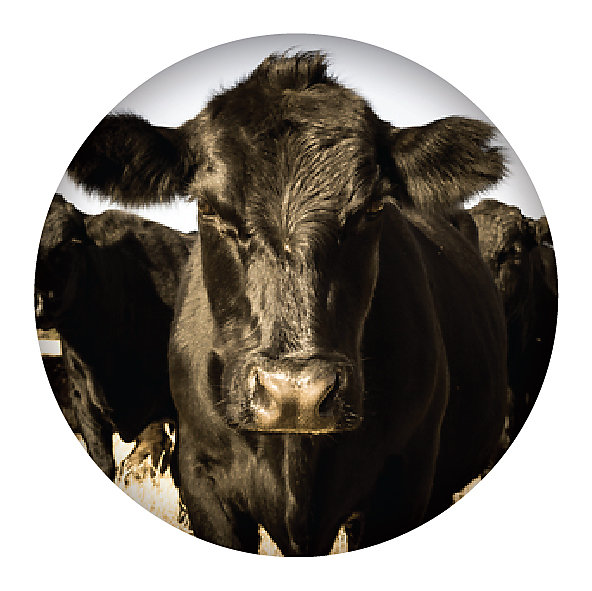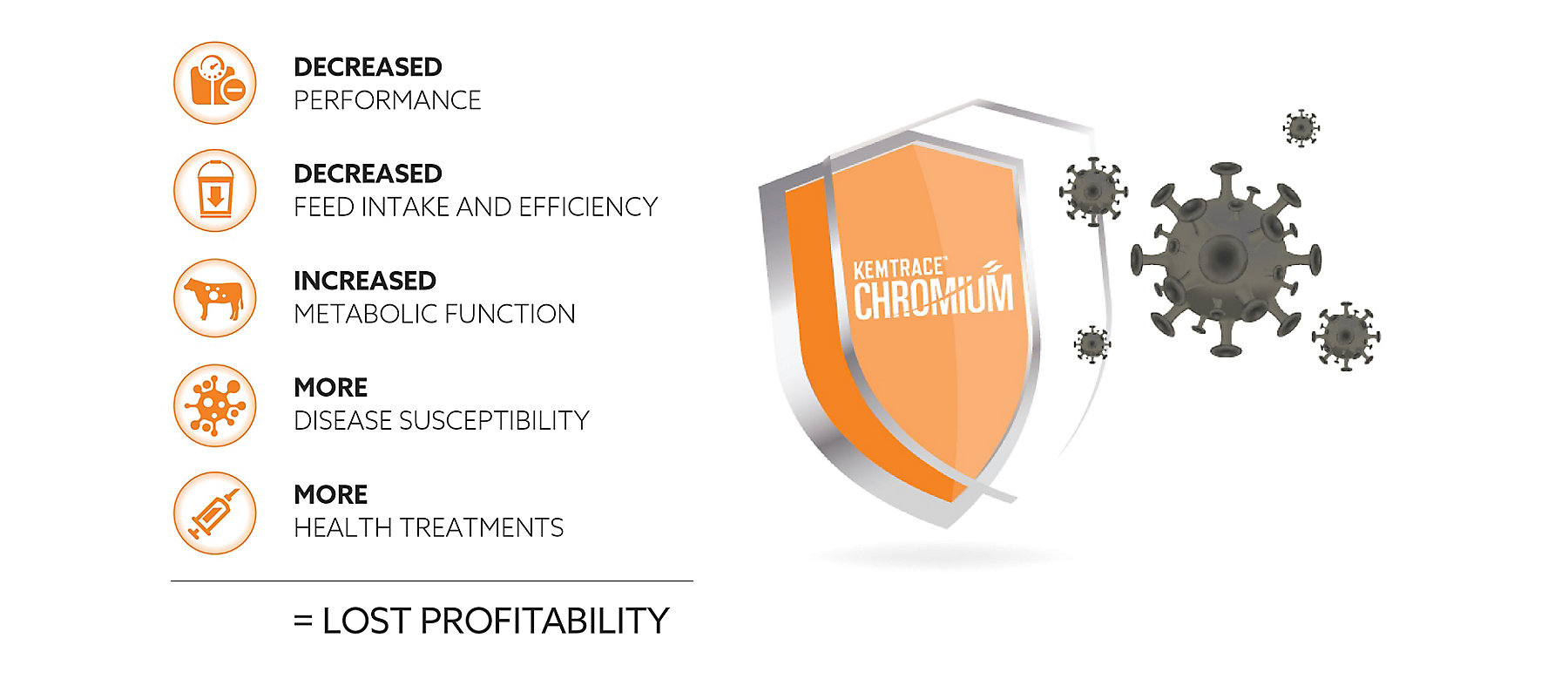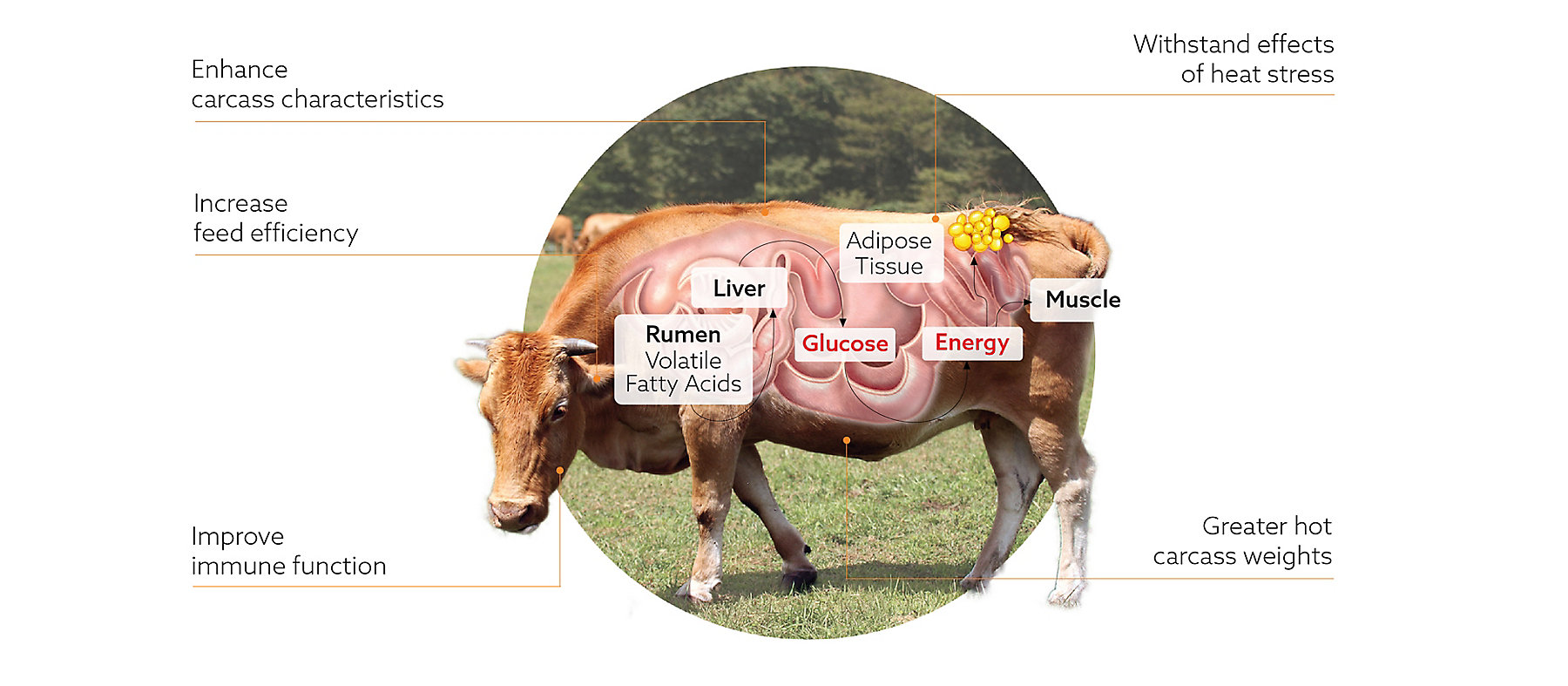Impact on the Beef Carcass
You are viewing Asia Pacific
KEMTRACETM Chromium

Insulin plays a key role in optimum cell function by acting as a “key” in the lock to the door that allows glucose into the cell. Once insulin has “unlocked the door,” blood glucose can enter the cell and be used as an energy source. Chromium improves insulin function and results in efficient clearance of glucose from the bloodstream.
KEMTRACE™ Chromium– is a water soluble, highly bioavailable, organic source of chromium that helps improve glucose utilization and reduce the negative impacts of stress for increased cellular energy and function. This results in improved growth and immunity in farm animals. KEMTRACE™ Chromium has been fed to millions of animals around the globe since its introduction in 2000. It is registered in more than 35 countries worldwide and is the only U.S. Food and Drug Administration - reviewed form of chromium propionate.

Nutritionists formulate diets to provide carbohydrates as an energy source for cattle. During the digestive process, carbohydrates are broken down into glucose. Glucose enters the blood and is transported to different organs in the body and when the blood reaches the pancreas, beta cells inside the pancreas detect rising glucose levels. To reduce glucose levels, insulin is released into the bloodstream.
The role of chromium is to stabilise the insulin receptor, allowing for more glucose to enter the cell, providing more energy to the animal essential for any needed metabolic function based on the animal’s hierarchical need for energy.
Chromium enhances the amount of glucose available to the animal. Glucose is critical as it’s used for any needed metabolic function based on the animal’s hierarchical need.

Fig.1. Chromium's role in glucose metabolism
During a stress event, such as an immune challenge, there can be substantial increases in glucose consumption by immune cells shifting energy demands away from production.
Animals with frequent immune challenges may experience:

More Efficient Energy Supply

Withstand the Effects of Stress
Chromium supplementation minimizes the negative effects of the stress response by consistently decreasing serum cortisol during stressful periods for cattle.
Improved Immune Function
Upon activation, immune cells become obligate glucose utilizers. Increased glucose uptake may help animals mount an immune response even under a severe immune challenge.
Increased Feed Efficiency
Chromium has been shown to alter insulin action and either increase dry matter intake or minimize a drop in feed intake among animals subjected to stress.
Increased Protein Accretion
Insulin is the primary hormone responsible for the uptake and storage of glucose by insulin responsive tissues. Muscle and adipose tissue are the main insulin responsive tissues in ruminants, but muscle accounts for over 80% of the insulin-dependent uptake of glucose. Chromium acts to potentiate the action of insulin, increasing glucose availability within the cell. Additional glucose in the muscle cell provides the energy for optimizing protein synthesis resulting in improved live performance and increased hot carcass weight.
© Kemin Industries, Inc. and its group of companies All rights reserved. ® ™ Trademarks of Kemin Industries, Inc., USA
Certain statements may not be applicable in all geographical regions. Product labeling and associated claims may differ based upon government requirements.
Your questions and feedback are important to us. Let us know how we can help you learn more about Kemin, our products, our services or our website.
Interested in starting a career with Kemin?
